Four plovers of the Bay Area
By Linda Carloni
One of the (many) great things about the City of Alameda is the birding. Our long sandy bay-side beach and mudflats offer a feast of winter shorebirds. Among my favorites are our four plovers.
Plovers are in the family Charadriidae – chunky small-to-medium-size shorebirds with short necks, large eyes, and relatively short bills. Unlike their sandpiper colleagues, they are visual feeders. As you watch them, they run, stop, and then peck to get their prey. Their shorter bills don’t allow them to probe effectively to find and devour their food, so they occupy a different feeding niche. Their large eyes let them forage in low-light conditions, even at night.
Of the Bay Area’s four plovers, the Killdeer is with us year-round. While it does share our beaches, it seems to prefer plowed fields, gravelly patches, and other human-altered areas. Killdeer parents are well known for their distraction display – feigning injury and calling loudly in a visible location to draw a predator away from the nest. When the predator is far enough from the nest, the performing Killdeer makes a quick recovery and flies away, returning later to the nest. Like the Snowy and Semipalmated Plovers, it is brownish-tan on top and white below. Distinctively, it has two full dark neck rings. Its loud “kill-deeeeeer” alarm call lets us know how it got its name.
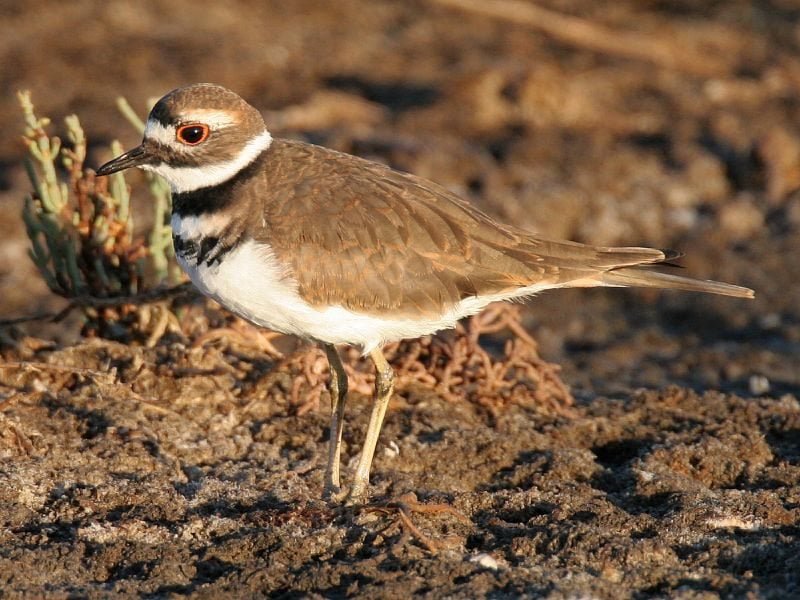
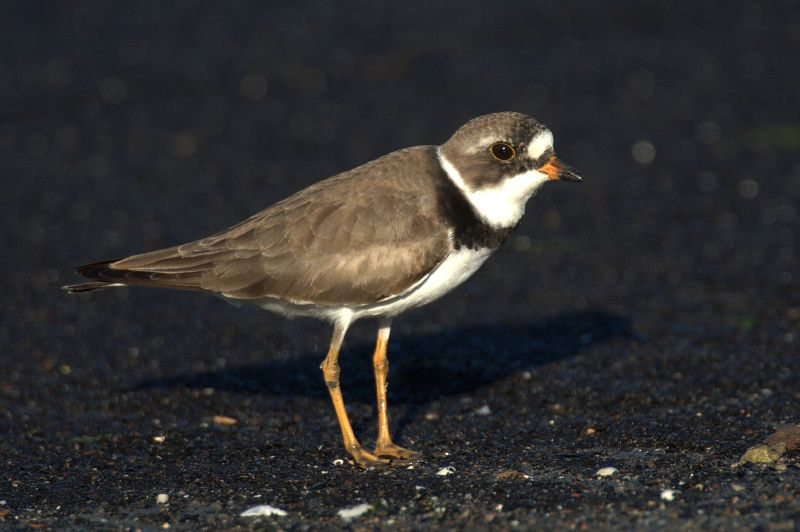
Unlike the Killdeer, the Semipalmated Plover joins us in the autumn; some stay for the winter, while others migrate further south. They leave us during spring and summer to breed in the north. Both the Killdeer and the Semipalmated have “disruptive coloration,” striking patterns that break up the silhouette of the bird – in the Semipalm’s case, one full dark neck ring.
These field marks help us distinguish one species from the other, but also make it more difficult for predators to see the bird as a whole against a variegated background. The Semipalmated Plover seems to be among the few plovers whose numbers are increasing, perhaps due to its versatility in food and habitat choice, its widespread coastal winter distribution, or its habitat expansion in the sub-Arctic.
The Snowy Plover is a much smaller, lighter, and whiter version of the first two. It’s only about 6 inches long, compared to about 7 inches for the Semipalm and a whopping 8 to 11 inches for the Killdeer. It has only one neck ring, which is broken in the front. A small group of Snowy Plovers arrives in Alameda each fall and spends the winter resting on the beach. Unlike our other plovers, which seem to prefer the eastern mudflat portion of the beach, our Snowies prefer the sandy portion further west.
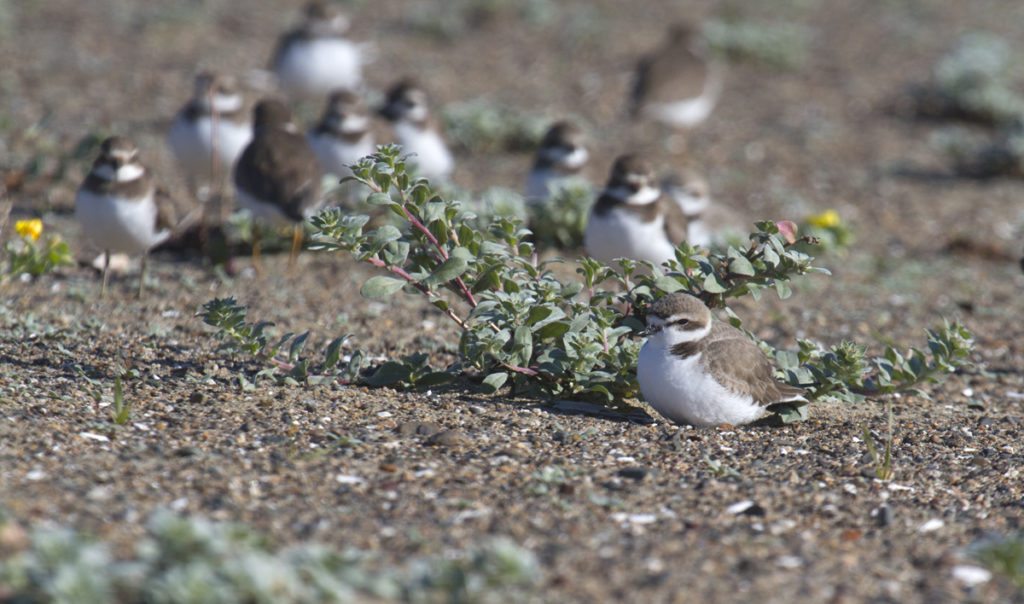
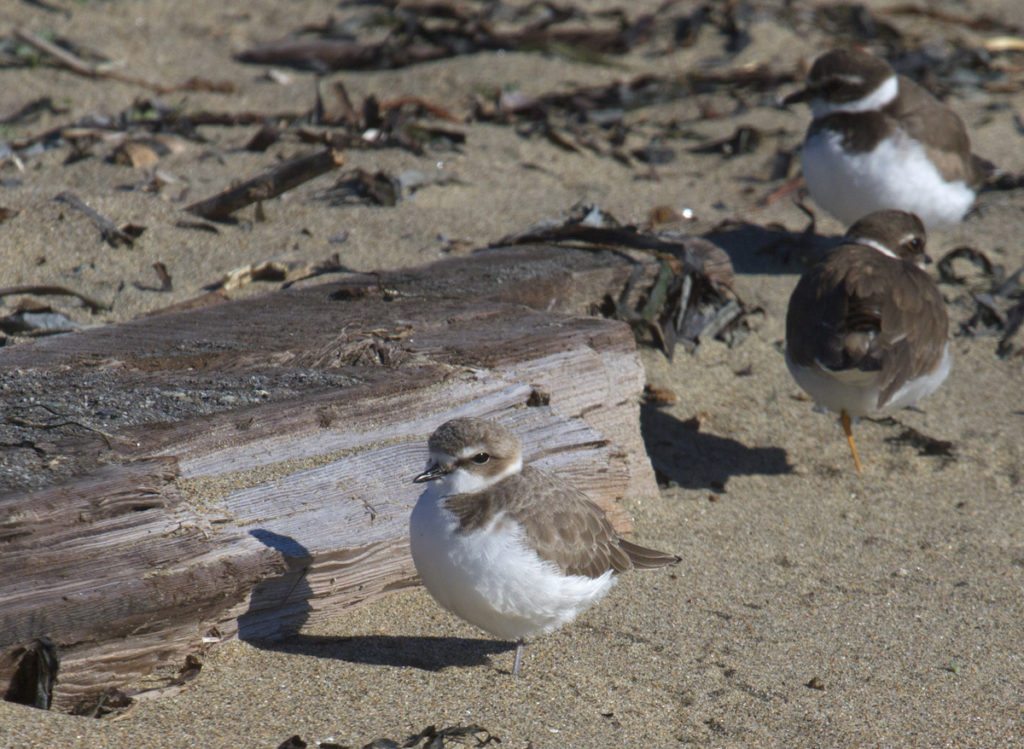
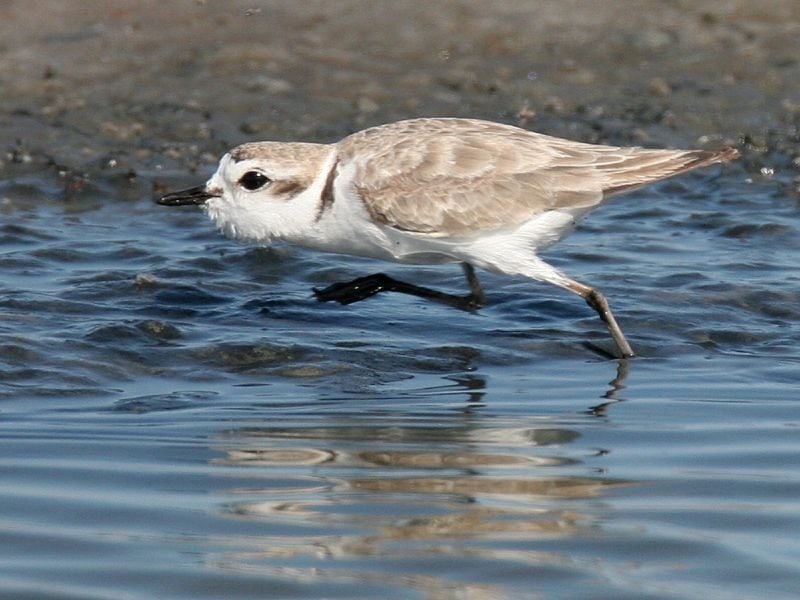
The Western Snowy Plover is threatened due to habitat loss, predation and disturbance, so we were delighted when, thanks to some prodding by Golden Gate Bird Alliance, East Bay Regional Parks installed symbolic fencing and educational signage alerting beachgoers to avoid disturbing the resting birds. While breeding Snowy Plovers have not been observed in Alameda, they do breed elsewhere in the Bay Area.
Our fourth and largest plover is the Black-bellied Plover, which when we see it in winter generally has a white belly and mottled grey back. If you are lucky enough to glimpse a male in breeding plumage when it arrives in late summer from its far northern breeding grounds, or just before it leaves us in the spring, you may see the striking black lower parts that led to its name.
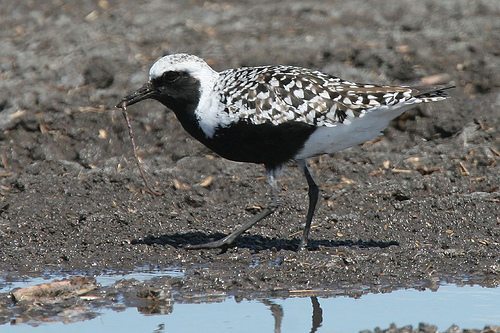

The Elsie Roemer Bird Sanctuary at the eastern end of Crown Memorial State Beach in Alameda is filled with Black-bellied Plovers; from August through March, it’s the most common plover of the northern California coast. For instance, our 2016 Oakland Christmas Bird Count found 1,056 Black-bellied Plovers versus 190 Killdeers, 137 Semipalms, and 25 Snowies.
The Elsie Roemer Bird Sanctuary is located in Alameda on Shoreline Drive, just west of its intersection with Broadway, and is an excellent place to find Black-belled and Semipalmated Plovers. You can also frequently see Killdeer. As of November 2017, the Snowy Plover symbolic enclosure is located on Crown Memorial State Beach along Shoreline Drive, roughly at the intersection Kitty Hawk Road, approximately 0.3 miles east of last year’s location.
Linda Carloni is an avid shorebirder, a member of the Golden Gate Bird Alliance Board of Directors , an active community volunteer and a retired lawyer. She is a 2013 graduate of the year-long Master Birder class co-sponsored by GGBA and California Academy of Sciences. We will be offering the Master Birder class again in 2018, starting in February. Check the Classes page of our web site in mid-December for details.
